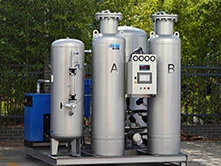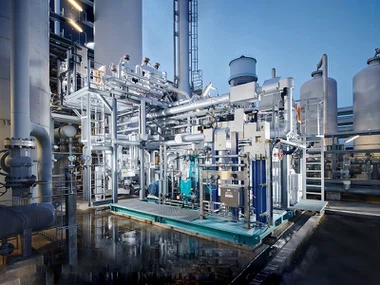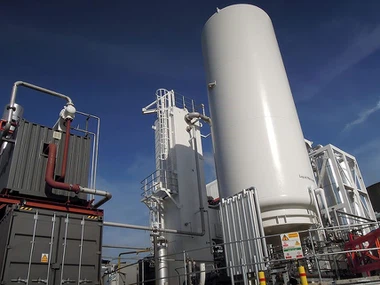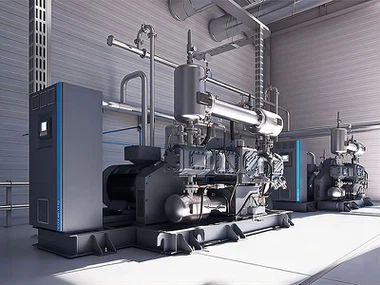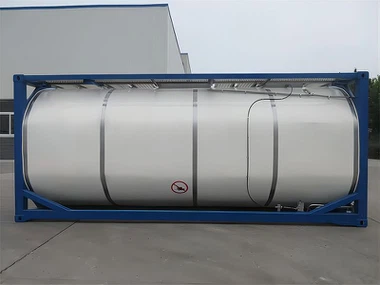Environmental Impact Of Air Separation Units
Jul 03, 2025
Leave a message
This article describes the environmental impact of air separation units (ASUs) and provides guidance on reducing these impacts.
Technical definition
Environmental factors are elements of organizational activities, products or services that interact with the environment, such as energy use and product transportation. Environmental impacts are changes in the environment caused by environmental factors, whether good or bad, such as pollution or emission reduction.
Overview of air separation units

Key points related to production and design
In production, industrial gas production is as close to customers as possible to reduce transportation impacts. Gas transportation methods are diverse, pipeline transportation can avoid many impacts, and small non-cryogenic generators increase on-site gas production.
Design planning is based on the concept of reducing environmental impacts. Considering potential wastes in the design stage can avoid future problems. It emphasizes reducing wastes and collecting them separately. Chemical safety data sheets are required on site.
Air separation units have small direct environmental impacts. Their gas substitution for non-gas processes can reduce environmental loads. They have many common characteristics. This article focuses on cryogenic air separation technology.
Main environmental impacts of the process
Main impact categories
Main impacts include compression energy consumption, cooling water, oil use, historical use of PCBs, VOC emissions, sewage discharge, noise vibration and maintenance waste.
Impacts related to air inhalation
The air emissions of the air separation process are air gas and impurities in the return air. The emissions of cryogenic plants are low, dangerous leaks may need to be reported, and the combustion emissions of the backup vaporization system may require license monitoring.
Air filters may be contaminated and need to be disposed of at authorized facilities after use.
Impact of the compression process
In terms of energy, cryogenic air separation has high energy consumption. It takes about 1 kWh/m3 to produce 1 cubic meter of liquid nitrogen or liquid oxygen. Non-cryogenic equipment has lower energy consumption but limited application. Energy efficiency can be improved in many ways.
In terms of noise and vibration, there are various sources of noise, which can be reduced by mufflers, etc. The sound level needs to be considered in equipment selection, operation and factory layout, and the vibration of the compressor has little impact.
There are multiple oil discharge points for oil use. Improved design and maintenance can reduce waste. Oil should not enter the drainage system, and waste oil needs to be stored and treated separately.
Impact of cooling process
Cooling needs to pay attention to drainage networks and effluents, and there are best practices for large-scale water-using activities.
Wastewater flows should be identified and treated separately. Condensate may contain metals, circulating cooling water contains chemicals, and may need to be treated before discharge. Cooling towers may need to monitor Legionella.
Impact of refrigeration equipment
In terms of VOC, hydrochlorofluorocarbons and other substances will be emitted if not properly controlled. Some are restricted by regulations, and low-impact refrigerants need to be selected and leaks need to be checked.
Ammonia can be used as a refrigerant, which has no impact on the environment but is toxic, and safety measures need to be taken.
Impact of maintenance and waste
Regular maintenance will generate waste, and the storage of consumables needs to be reviewed. Polychlorinated biphenyls need to be marked for disposal. Catalysts, batteries, hazardous metal wastes, etc. need to be disposed of in accordance with regulations. Insulation material handling needs to pay attention to relevant matters.
Impact of storage
Waste storage requires appropriate containers, and the capacity of liquid waste storage facilities is required. Different wastes should be separated.
Underground storage tanks may contaminate soil and groundwater. Leaks need to be handled in a timely manner. New facilities should avoid using them. Double-walled tanks should be used when necessary and monitored regularly.
Above ground storage tanks have a contamination risk but are easily controlled, filling needs to be supervised, overflow alarms can be installed, and leaks need to be prevented.
Visual impact
The visual appearance of the plant needs to be considered in relation to the location and "green space", which may be regulated by planning conditions.
This article introduces the environmental impact and emission reduction guidance of air separation units (ASUs). ASUs separate air through cryogenic technology, with less direct environmental impact, and their gas substitution for non-gas processes can reduce environmental load. In terms of production design, local production, pipeline transportation and on-site gas production reduce transportation impact, and the design stage focuses on waste reduction and classified collection. The main environmental impacts include compression energy consumption, cooling water use, VOC emissions and other aspects. For example, air intake-related emissions are low but leaks need to be monitored; the compression process is energy-intensive and noisy; the cooling process involves wastewater treatment; refrigeration equipment may emit restricted substances; maintenance and storage will also generate waste and pollution risks, and visual impacts must also be considered.
